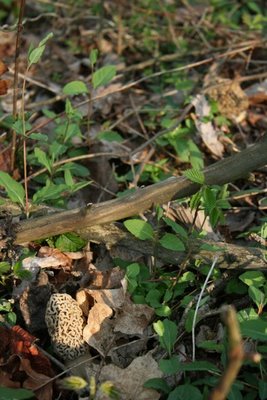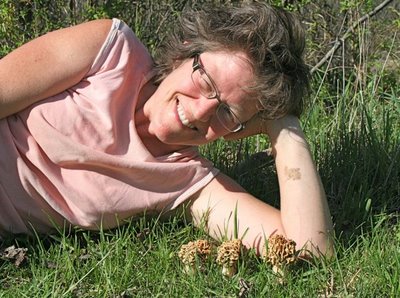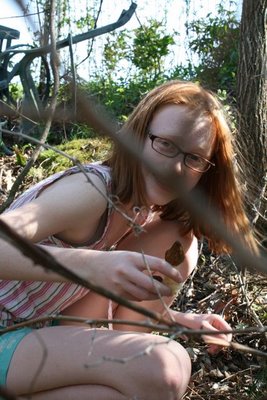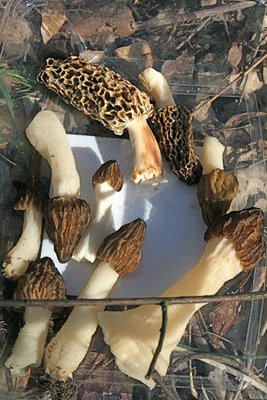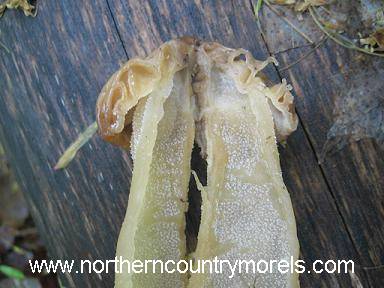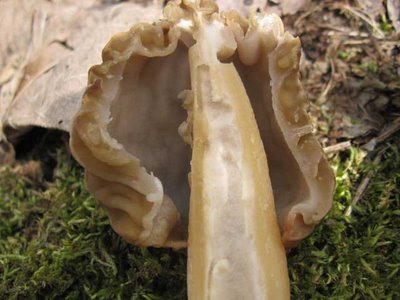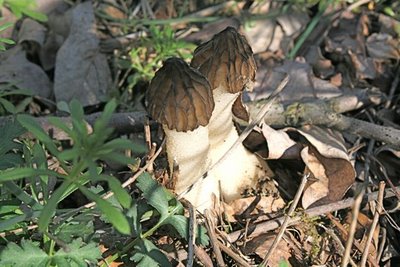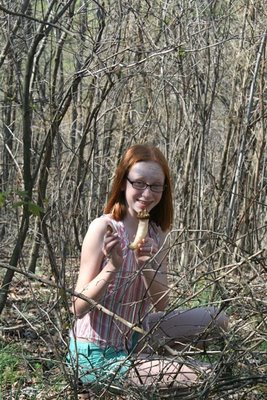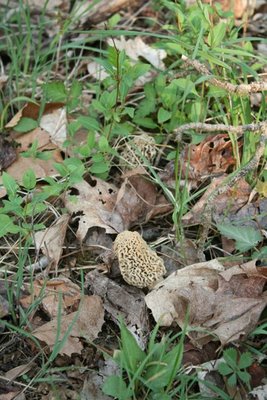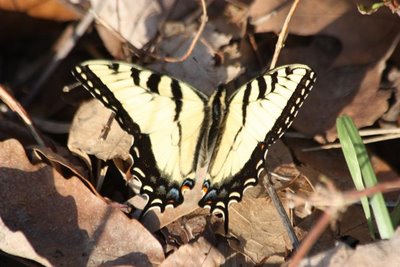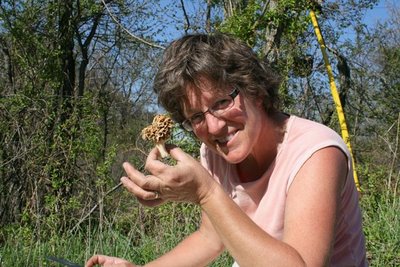Looking for Morels, Which We Didn't Find
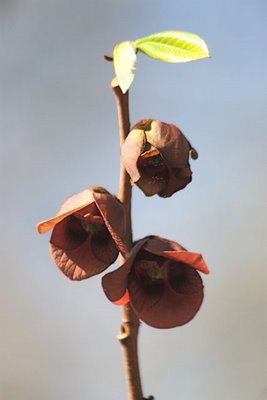 Oh, the things you find when you go into the woods.
Oh, the things you find when you go into the woods.Looking for morels, which we didn't find
We found other things.
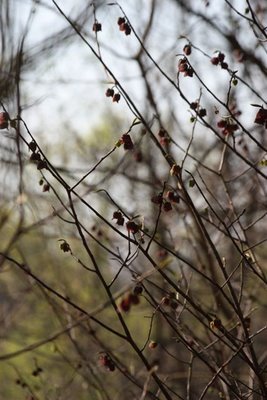
A whole new patch of pawpaws in a place I hadn't looked
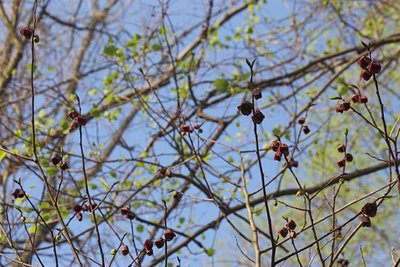
Dangling bloody blossoms, calling flies to tickle and play
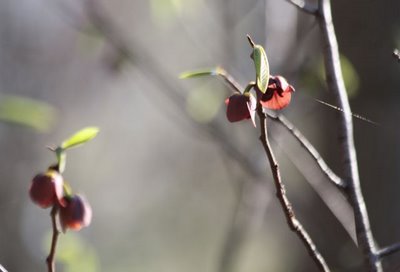
So that from this strange bell a fruit will form
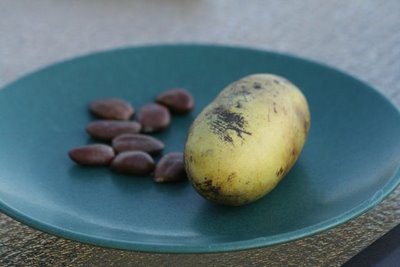
Banana custard, pulp and seeds in a soft yellow skin.
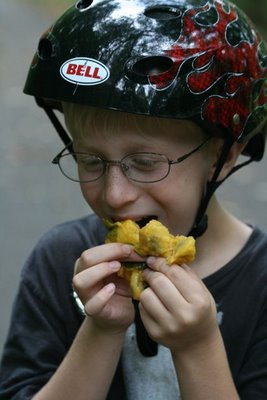 We'll come back in September.
We'll come back in September.Looking for morels, which we didn't find
I stopped on a hillside to watch a cardinal build her nest
Followed her to a honeysuckle tangle
And there found a butterfly
never before seen on our land
The round rings on its wings rang a distant bell.
And there in the woods I combed the books of memory
Found the answer waiting, struggling up through the pages and the hard cover of time
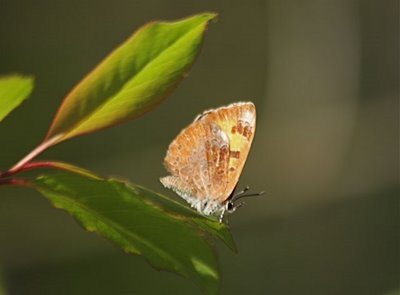
A Harvester! Fenisecus tarquinius
Only the second seen in a life of looking for butterflies
And here! on our land, not one but two.
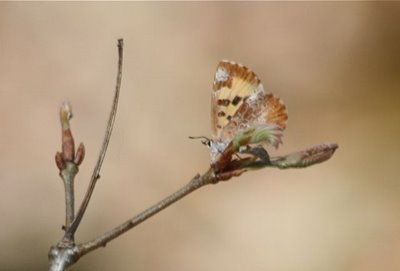
Its caterpillar, the only predaceous one, spurning leaves for aphids.
Number 73 for the property.
But I digress. Numbers are not poetry.
Walking a little farther along, the first turtle of spring
Frozen, watchful
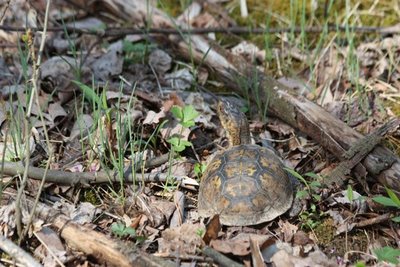
I pretended not to see him. He never pulled in his head.
A victory, however small.
And farther along the same slope
I stop, become still
A crunch of leaves, almost inaudible
I focus like an owl on a spot yards away
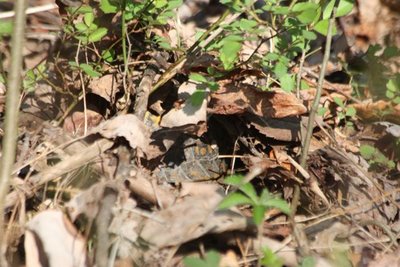
Where the second turtle of spring
has drawn in its foot
That sound enough to betray its presence.
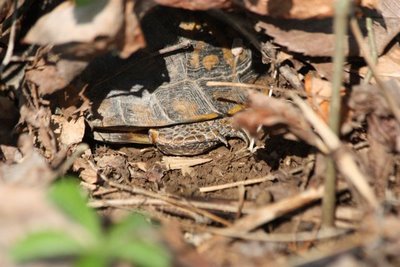
Its eye an angry garnet
Discovered but resolute.
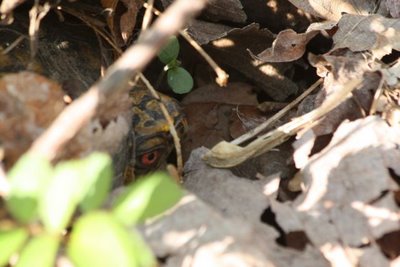
Looking for morels, which we didn't find.
Serendipity is the effect by which one accidentally discovers something fortunate, especially while looking for something else entirely. The word has been voted as one of the ten English words that were hardest to translate in June 2004 by a British translation company--Wikipedia
"In the fields of observation chance favors only the prepared mind." Louis Pasteur
Harvester, Fenisecus tarquinus, #73 for Indigo Hill, Whipple, Ohio, April 26, 2009
Labels: box turtle, Fenisecus tarquinius, harvester, Louis Pasteur, morels, pawpaw, pawpaw flowers, serendipity

